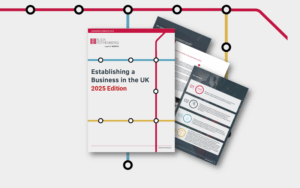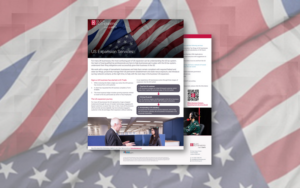Tax, politics, and the next general election
With a general election widely predicted for Spring 2024, the major parties will be drafting their manifestos over the next few months. Here are my suggestions for what they should – and, importantly, should not – include in relation to tax.
I am not making policy proposals about whether taxes, spending and borrowing should go up, down or remain the same – those are political decisions for the parties to take. What I am seeking to do is to point out the implications of different policy decisions: for example, if a party wants to spend more on the NHS, and does not want to borrow more, then taxes will have to go up. Which tax increases would raise money most efficiently and fairly?
I will also highlight some anomalies in the tax system which I hope all of the political parties will agree should be fixed during the next parliament.
The current tax system
Let’s start with a brief overview of the current system. How much does it raise, and what are the pressures?
Overall, government tax receipts in 2021/22 were about £732bn, or 32% of GDP (see bit.ly/416QQpl). This is expected to rise to 35% by 2025/26 (due, in particular, to the freezing of income tax bands) which will be the highest sustained level, as a proportion of GDP, since the second world war (see bit.ly/411xbqF).
The main elements in 2021/22 were income tax at £198bn, NIC at £147bn and VAT at £128bn. Together, these three taxes account for around 65% of total tax revenues. Other indirect taxes raise £83bn, of which the largest amount is fuel duties at £26bn. Capital taxes, including stamp duties, CGT and IHT, raise about £30bn and corporation tax raises around £40bn.
However, a chancellor wanting to cut taxes will not have an easy job. Pressures on spending are increasing, with recent public sector strikes showing that there is deep dissatisfaction with wages, and the difficulties that the NHS has faced this winter are obvious. Meanwhile, borrowing is also high, and the rise in interest rates over recent months has had an impact on government borrowing costs. The fiasco of the Truss/ Kwarteng mini-Budget shows the danger of unfunded tax cuts which can result in a loss of market confidence.
What did the 2019 manifestos say?
Although the election in 2019 was rapidly overtaken by the Covid pandemic, there are still lessons to be learned from what the main parties promised in their manifestos.
The Conservative manifesto (bit.ly/3EiyIPw) promised not to raise the rates of income tax, national insurance, or VAT, and to raise the national insurance threshold to £9,500 with the aim of raising it to £12,500 to match the personal allowance. There was a promise to keep the triple lock on pensions, and to abolish the tampon tax. A fundamental review of business rates was announced, as well as an increase to the employment allowance for small businesses. The previous cut in corporation tax, from 28% to 19%, was praised (with no explicit promise to change or maintain the rate), but there was to be an increase in the rate of R&D tax credit to 13% and a review and reform of entrepreneurs’ relief. There was to be a focus on ‘building a fairer taxation system’, with action to take further measures on avoidance and evasion and to implement the digital services tax.
The Labour manifesto (see bit.ly/3lI4NJ) included a proposal for a windfall tax on oil companies. There was a promise to pay for better public services by ‘creating a fairer taxation system’, reversing some of the cuts to corporation tax (while keeping rates lower than in 2010) and increasing income tax for those on more than £80,000, while freezing national insurance and income tax rates for everyone else. There was also a guarantee of no increases in VAT. There was to be the launch of ‘the biggest ever crackdown on tax avoidance and evasion’ as well as reform of ‘the inefficient system of tax reliefs’. The ‘unfairness’ that sees income from wealth taxed at lower rates than income from work was to be ended. There was a promise of a review of the option of a land value tax on commercial landlords as an alternative to business rates. On pensions, the triple lock was to be maintained.
In other parties’ manifestos, the Liberal democrats said (see bit.ly/3YFE27t) that they would restore corporation tax to 20%, abolish the separate capital gains tax-free allowance and take ‘tough action’ against corporate tax evasion and avoidance. The Green party manifesto (bit.ly/3IyipRd) included a carbon tax, estimated to raise £76.7bn, and said that they would simplify income taxes by merging employee NIC, CGT, IHT, dividend tax and income tax into a single consolidated income tax, and that this would bring in an estimated £20bn per year. There would be a land value tax instead of council tax and business rates, and the rate of corporation tax would be increased to 24%. Non-doms would be required to pay tax on foreign income.
Both of the main parties significantly restricted their ability to raise taxes by promising not to raise the rates of income tax (apart from Labour’s promise to raise income tax for the highest earners), national insurance and VAT – the three largest taxes by overall revenue. Both also committed to maintaining the triple lock on pensions. This appears to be an unnecessary straitjacket and harks back to John Smith’s penny on income tax which is widely thought to have lost Labour the 1992 election.
Given the current widely accepted need for higher spending on public services, it is likely that well-explained tax rises are less likely to lose votes in 2024.
The main options: rates of tax
Raising the basic rate of income tax by 1p brings in about £5bn (see bit.ly/3XCV05d). A key advantage is that it applies progressively: someone on £10,000 per annum pays nothing; on £30,000 they pay about £175 per annum, and on £120,000 they would pay £1,200. While many people will grumble, it’s one of the simplest and fairest ways of raising government receipts.
Many people would prefer the focus to be on the higher rates of tax. But while this has the advantage of making those with more money pay more, it raises less tax overall because most people don’t earn enough to pay higher rates. But a reasonable policy might be to raise all rates of tax by 1p, perhaps with a bigger rise in the higher rates.
Raising the rate of NIC by 1p brings in a similar amount. But compared to income tax, it is more directly a tax on jobs: it is not applied to unearned income and is also charged on both employers and employees. And those over state pension age do not pay NIC at all, even if they are still working. So, it is more likely to reduce economic growth than an increase in income tax and is arguably less fair as those who have retired, or who have more savings income, do not pay it.
And the idea of ‘raising NIC to pay for the NHS’ is attractive politically, but soon causes difficulties – as we have seen over recent months with NIC going up and down three times in a single year. Hypothecation, or earmarking particular taxes for particular purposes, is generally hard to implement well: in particular, if you have said that a particular tax will pay for specified expenditure, and the tax receipts then fall, are you going to cut the expenditure? It is more likely that it will simply be met out of general taxes, so what is the point of hypothecation?
Raising VAT by 1p again brings in about £5bn. But because the raise is immediately visible, it is likely to have a short-term economic impact – people, especially those already struggling with the cost of living, will react by cutting their spending. It also hits the poor proportionately harder than the rich, since most of their spending is on essentials. This is alleviated to some extent by the zero-rating of most foodstuffs and the lower rate of 5% on electricity, gas and heating oil, but a proportion of any individual’s expenditure is going to be standard-rated.
Even if taxes are going to rise overall, a government might want to fund a temporary cut in VAT to help stave off a recession and to help with the cost of living. An advantage of a temporary VAT cut is that it has an immediate impact on growth, and can be implemented (and reversed) quickly. However, cuts such as the abolition of the tampon tax, and zero-rating of e-books, were in practice retained by business rather than being passed on to customers.
Raising corporation tax would bring in a smaller sum of about £2.5bn per 1p increase. It has also already been increased substantially, from 19p to 25p, leaving it at its highest rate since 2011. The snag with increasing corporation tax is that it may deter investment and will also have an impact on the prices charged to customers – so it is not good for economic growth or for the cost of living.
Other taxes generally raise much less than these main items (which is why the constraints of the 2019 manifestos caused such difficulties). But there is an elephant in the
room: fuel duty. Under measures introduced in 2010, this is supposed to rise by more than inflation – the fuel duty escalator. However, it has been frozen since 2011 and was then reduced in 2022. The ‘normal’ increase this year would therefore be at least 10p (reversing the 2022 cut, and raising it by RPI) which seems highly unlikely. However, the failure to continue with the fuel duty escalator means that tax receipts are about £10bn a year less than they would otherwise have been (with a cumulative effect of about £65bn – see bit.ly/3lNjUSj). While increasing it substantially would be unpopular, arguably it is a complete contradiction of the government’s ‘net zero’ ambition to keep it frozen. And it is interesting that it was not even mentioned in any of the 2019 manifestos.
Avoidance and evasion
Politicians of all parties regularly promise to introduce a fairer tax system, and to clamp down on avoidance and evasion. But there has been a raft of anti-avoidance measures over the last 10 to 15 years, supported by the GAAR, and HMRC has had a high success rate (80% or more) in challenging artificial avoidance schemes in the courts. It therefore seems unlikely that any changes in this area will bring in significant additional revenue.
Structural changes
There are various structural changes which could be made to the tax system, some of which are likely to be more popular – with politicians and/or voters – than others.
Is it fair that pensioners do not pay NIC, even if they have earned income? Perhaps not but changing this would not bring in much money (few people over state retirement age – now 66 – will have much earned income) and would be highly unpopular with a section of the population which is most likely to vote. Extending NIC to all income would be fairer but would then completely demolish what remains of the contributory principle, and the obvious next step would then be to combine NIC with income tax. But making it obvious that most people pay a basic rate of over 32% (income tax of 20% and NIC of 12.8%) is likely to be political suicide.
A change which could be made would be to impose an amount equivalent to employer’s NIC on large partnerships, such as most legal and accounting firms (but not Blick Rothenberg, which is a limited company and pays full employer’s NIC). While the revenue this would raise is hard to estimate, overall, the self-employed pay about £5.6bn less in NIC than employees (see bit.ly/41h8bvV). Charging this amount on all self-employed businesses would stifle growth at a time when governments want to be seen to be supporting small businesses, but the rationale for a partner earning £1m in a major law firm paying less NIC than a junior associate is hard to see.
On VAT, the UK has a relatively high threshold at around £85,000. While this is attractive to many small businesses – a self-employed builder or plumber can probably earn a decent living without needing to charge VAT – it causes significant ‘bunching’ just below the threshold and in the longer-term stifle’s growth – businesses stay just below £85,000 rather than taking on an extra assistant – and also distorts competition. A bold move would be to reduce it to £50,000 or even £25,000.
Zero-rating also leads to numerous disputes – from the infamous Jaffa cake case, now over 30 years ago, to regular debates about foods such as Pringles, Innocent Smoothies, and varieties of flapjack. The tax system would be much simpler if zero-rating were to be abolished altogether (with the funds raised being used to increase benefits such as universal credit, at least in the short term), but cutting back the availability of zero-rating to a shorter list of basic foodstuffs would achieve some simplification as well as raising some funds.
If Labour were to win the next election, it is likely that they would abolish non-dom status and would also look seriously at a wealth tax. The Wealth Tax Commission calculated that a one-off wealth tax, charged at 1% per year on wealth over £2m, would raise £80bn (see bit.ly/3IGPNoZ).
Abolishing non-dom status has been mentioned many times before, and Labour may well decide that the time is now right to go ahead (unlike in 1997, when many expected action to be taken, but Labour concluded then that there would be a net cost to the economy of doing so). Given the changes which have been already brought into the deemed domicile rules, and the annual charge, abolition will probably not result in very significant additional receipts; the Labour proposal in April 2022 did not include an estimate of the likely impact.
A wealth tax may also be seen as an attractive way of replenishing government coffers, although the amount it will raise is very sensitive to the level at which it starts to apply. Applying it to wealth over (say) £500k would bring many homeowners within its net, while setting the limit at (say) £5m would significantly reduce the overall receipts.
And what about paying serious attention to fuel duty? Raising it, even in line with inflation, would bring in meaningful sums, some of which could be spent on supporting electric charging infrastructure or better transport links such as rural bus services.
Anomalies and minor changes
There are some more minor changes which are unlikely to raise significant amounts, but which would improve the tax system.
The personal allowance is gradually withdrawn on income above £100,000, meaning that those with incomes between £100,000 and £125,140 suffer a marginal rate of 60% – much higher than the top rate of 45% paid by someone who earns £1m. Reintroducing the personal allowance for all, with an adjustment to the higher rate so that the change overall is revenue-neutral, would be a welcome simplification.
And the high-income child benefit charge (HICBC), introduced ten years ago, is ridiculously complicated and catches out many people who do not realise that they are subject to it. It applies where one person in a couple earns more than £50,000, so breaches the principle of independent taxation and requires many people who would otherwise simply be taxed under PAYE to complete a self-assessment return. It would be much better to revert to child benefit being universal, if necessary, making it taxable (and adjusting the rate bands) so that the change does not have a significant cost.
Conclusion
It is simply not possible to reduce taxes, spend more on public services and borrow less. Politicians of all parties need to accept that there are choices to be made and should explain which choices they want to make and why. Above all, we need a strategy for the tax system and a real focus on making it work better.
Funding HMRC so that it is able to answer the phone and respond promptly to those with questions would be a good start, as would the reinstatement of the Office for Tax Simplification, together with a clear brief and adequate funding.
This article was originally published in the Tax Journal and is reproduced with kind permission.
You may also be interested in

Ele Theochari has been appointed as Vice President of The Association of Taxation Technicians

Retailers Both Online and High Street Struggle Amid Rising Staffing Costs













